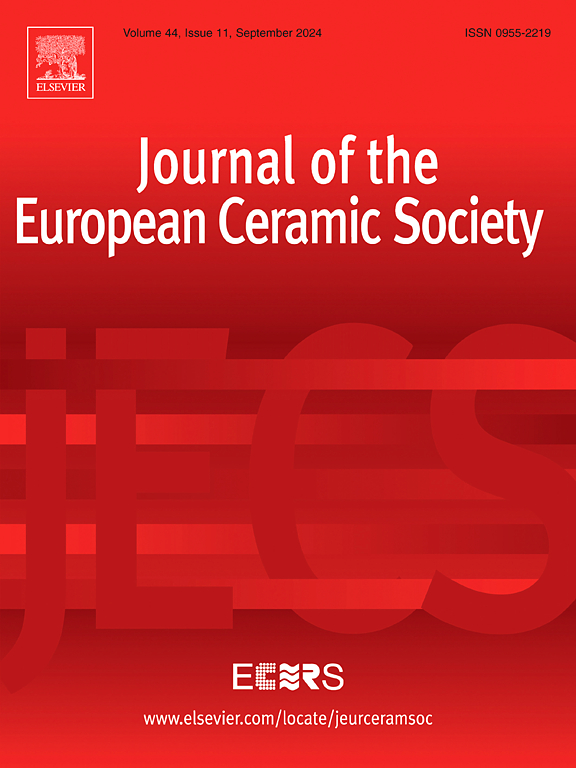Direct ink writing of aqueous-based Gadolinium (III) oxide slurries
IF 5.8
2区 材料科学
Q1 MATERIALS SCIENCE, CERAMICS
Journal of The European Ceramic Society
Pub Date : 2025-03-20
DOI:10.1016/j.jeurceramsoc.2025.117381
引用次数: 0
Abstract
Gadolinium (III) oxide (gadolinia, Gd2O3) has recently been identified as an intriguing material for applications in the medical, solid oxide fuel cell, and nuclear industries. This interest drives the need for developing and understanding manufacturing techniques that can produce dense Gd2O3 structures. Direct ink writing (DIW), an extrusion-based additive manufacturing method, has also garnered interest because of its capability to produce dense ceramic parts with increased complexity in an economical manner. In this study, DIW was explored as a manufacturing technique for Gd2O3. Experiments were performed to develop Gd2O3 bearing inks capable of being processed via DIW. Ink solids loading and sintering temperatures were varied to assess their impact on the final density and microstructure. Optimum sintering conditions are proposed and were experimentally verified at a dwell temperature of 1500°C. Gd2O3 samples were successfully manufactured using DIW, achieving densities greater than 96 % of the theoretical density.
水基氧化钆(III)浆料的直接油墨书写
钆(III)氧化物(gadolinia, Gd2O3)最近被认为是一种有趣的材料,可用于医疗,固体氧化物燃料电池和核工业。这种兴趣推动了开发和理解可以生产致密Gd2O3结构的制造技术的需求。直接墨水书写(DIW)是一种基于挤压的增材制造方法,也因其能够以经济的方式生产复杂性增加的致密陶瓷部件而引起了人们的兴趣。在这项研究中,DIW作为Gd2O3的制造技术进行了探索。通过实验开发了能够通过DIW加工的含Gd2O3的油墨。改变油墨固体载荷和烧结温度,以评估它们对最终密度和微观结构的影响。提出了最佳烧结条件,并在1500℃的保温温度下进行了实验验证。用DIW法成功制备了Gd2O3样品,其密度大于理论密度的96% %。
本文章由计算机程序翻译,如有差异,请以英文原文为准。
求助全文
约1分钟内获得全文
求助全文
来源期刊

Journal of The European Ceramic Society
工程技术-材料科学:硅酸盐
CiteScore
10.70
自引率
12.30%
发文量
863
审稿时长
35 days
期刊介绍:
The Journal of the European Ceramic Society publishes the results of original research and reviews relating to ceramic materials. Papers of either an experimental or theoretical character will be welcomed on a fully international basis. The emphasis is on novel generic science concerning the relationships between processing, microstructure and properties of polycrystalline ceramics consolidated at high temperature. Papers may relate to any of the conventional categories of ceramic: structural, functional, traditional or composite. The central objective is to sustain a high standard of research quality by means of appropriate reviewing procedures.
 求助内容:
求助内容: 应助结果提醒方式:
应助结果提醒方式:


